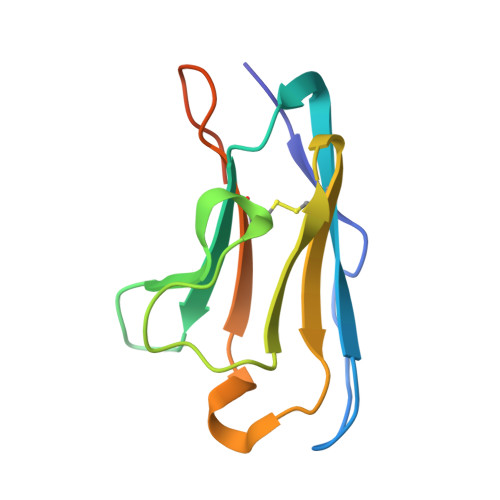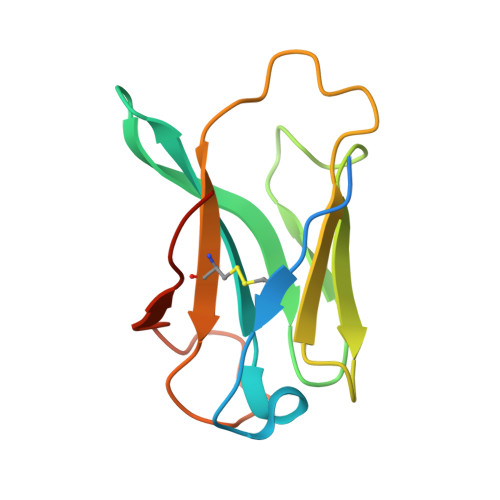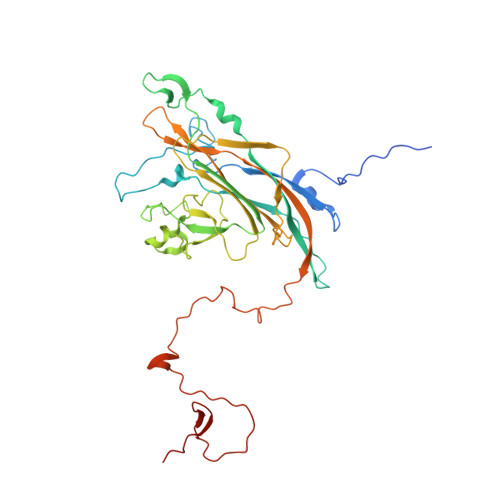Antibody escape by polyomavirus capsid mutation facilitates neurovirulence.
Lauver, M.D., Goetschius, D.J., Netherby-Winslow, C.S., Ayers, K.N., Jin, G., Haas, D.G., Frost, E.L., Cho, S.H., Bator, C., Bywaters, S.M., Christensen, N.D., Hafenstein, S.L., Lukacher, A.E.(2020) Elife 9
- PubMed: 32940605
- DOI: https://doi.org/10.7554/eLife.61056
- Primary Citation of Related Structures:
7K22, 7K23, 7K24, 7K25 - PubMed Abstract:
JCPyV polyomavirus, a member of the human virome, causes progressive multifocal leukoencephalopathy (PML), an oft-fatal demyelinating brain disease in individuals receiving immunomodulatory therapies. Mutations in the major viral capsid protein, VP1, are common in JCPyV from PML patients (JCPyV-PML) but whether they confer neurovirulence or escape from virus-neutralizing antibody (nAb) in vivo is unknown. A mouse polyomavirus (MuPyV) with a sequence-equivalent JCPyV-PML VP1 mutation replicated poorly in the kidney, a major reservoir for JCPyV persistence, but retained the CNS infectivity, cell tropism, and neuropathology of the parental virus. This mutation rendered MuPyV resistant to a monoclonal Ab (mAb), whose specificity overlapped the endogenous anti-VP1 response. Using cryo-EM and a custom sub-particle refinement approach, we resolved an MuPyV:Fab complex map to 3.2 Å resolution. The structure revealed the mechanism of mAb evasion. Our findings demonstrate convergence between nAb evasion and CNS neurovirulence in vivo by a frequent JCPyV-PML VP1 mutation.
Organizational Affiliation:
Department of Microbiology and Immunology, Penn State College of Medicine, Hershey, United States.
















